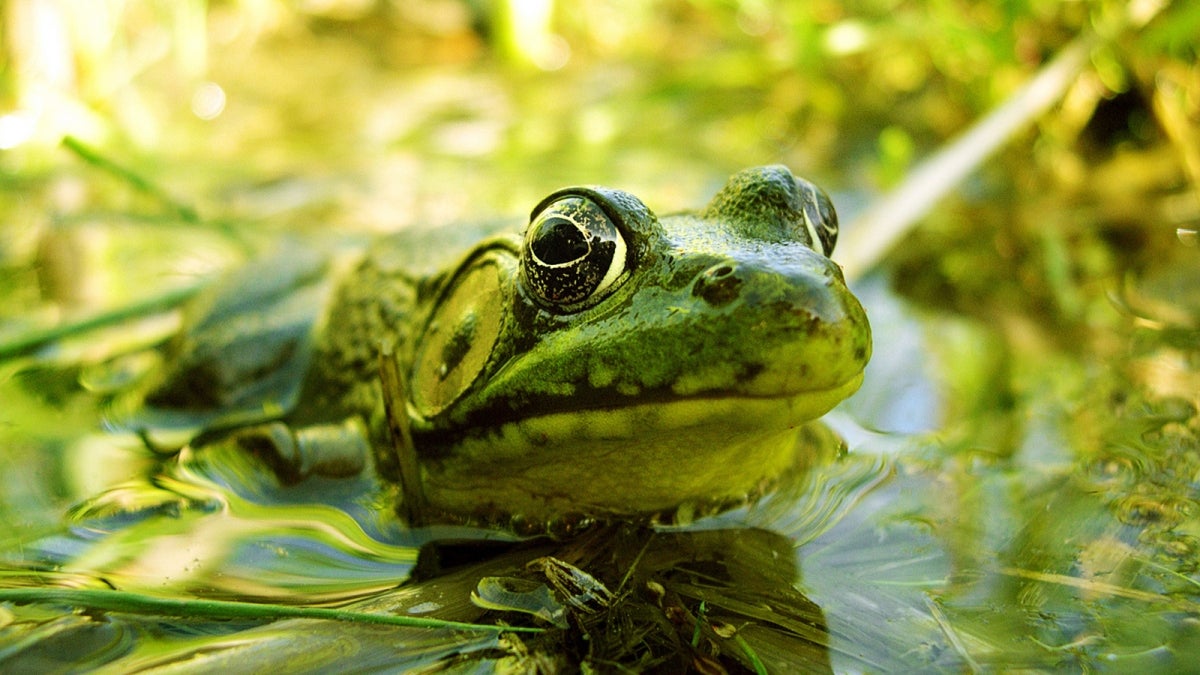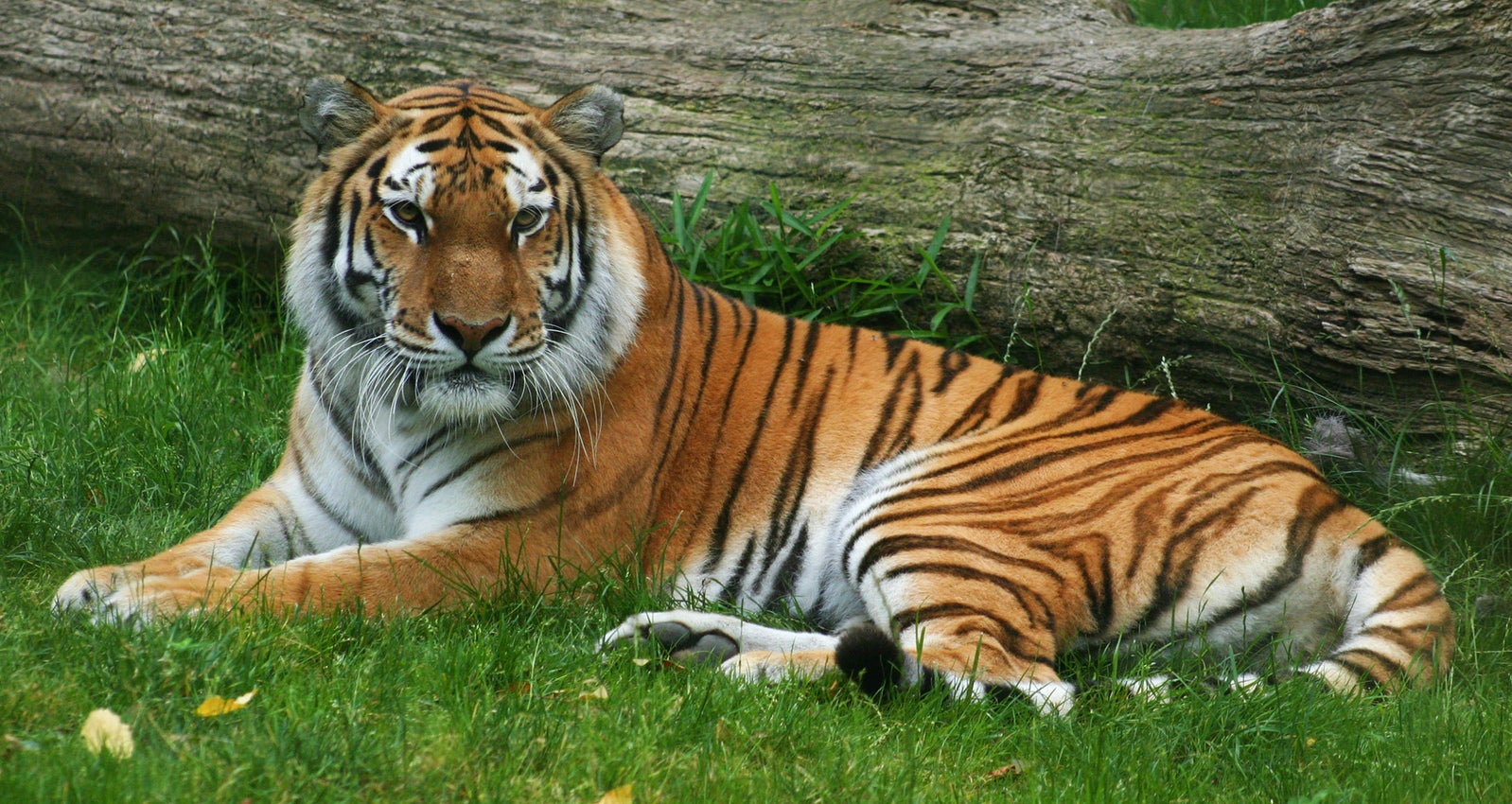Biological diversity is the variety of life on Earth, ranging from the microverse of crabs, barnacles and mussels nestled in a tidal pool to a macroverse of baboons, giraffes and elephants ranging across savanna and veldt.
And it’s disappearing. Too often we read about another species in danger of extinction. Ninety-eight percent of tigers are gone. There are four northern white rhinos left in the world — three at a conservancy in Kenya and one in the San Diego Zoo. Thirty percent of frogs are nearing extinction. Honeybees are vanishing across the globeAccording to National Geographic (tigers), UC Berkeley (frogs) and the U.S. Department of Agriculture (bees). .
There’s no longer a question of how we're going to save all these species. The reality is we’re past that point.
“We can’t save everything,” said Anita Hagy Ferguson, program coordinator for ASU's Center for Biodiversity Outcomes. “We’re not operating in that la-la land. It’s heartbreaking, but we are operating with real data, with real reality, and you cannot save everything. You have to make choices in what to save and how to save it, so that we can move quickly.”
The center was created a year ago to pragmatically stem the tide of loss in what has been called the Sixth Extinction. Its mission is to make discoveries and create solutions to conserve, where possible, and to manage biodiversity for the long term as the world rapidly changes.
“If we don’t have anyone who can understand nature, how can we protect it?” said founding director Leah Gerber, a marine conservation biologist and a professor with the School of Life SciencesThe School of Life Sciences is part of the College of Liberal Arts and Sciences..
According to National Geographic, 98 percent of tigers are gone. As more and more species become at risk, wise — and swift — decisions must be made. “You have to make choices in what to save and how to save it, so that we can move quickly,” said ASU Center for Biodiversity Outcomes program coordinator Anita Hagy Ferguson. Photos by Freeimages.com
The centerThe Center for Biodiversity Outcomes is part of the Julie Ann Wrigley Global Institute of Sustainability and the School of Life Sciences.’s research focuses on five areas: biodiversity assessment and decision tools; governance and biodiversity; advancing corporate sustainability; public health and biodiversity; and engagement of underserved youth.
Educating two groups with little knowledge of nature — decision makers in business and government, and those underserved youth — is the key behind those five research areas, center officials said.
How will the center know it’s making a difference? When corporations automatically think about their impact on the natural world, when government agencies and conservation groups ask for help in solving problems, and when young people who traditionally aren’t involved with the natural world choose careers in conservation biology.
“As far as success, our metrics are impacts on decisions, on society and on building our capacity to address biodiversity challenges,” Gerber said.
New methods
Conservation scientists know they’re losing the fight. Traditional methods, like roping off a habitat and telling people "hands-off," aren’t working.
“A big reason is because biodiversity conservation problems aren’t really problems inherent with the animals and plants,” Hagy Ferguson said. “They’re human-social problems.
“We want to work with the local people who live in those places where those species live. We want to work with people who fish for a certain kind of fish that’s going extinct. Even though it’s a resource, they have an interest in its conservation from a resource perspective. Our objective is to work on multiple scales.”
Going out and studying something and tossing results back to interested parties hasn’t worked for conservation biologists either.
Instead of coming down from the mount of academia and bestowing knowledge, the center’s approach is to go to the outside world and ask questions. What kinds of problems do you have, and how can we help? What is your need? Researchers offer questions in a scientific framework, applying rigorous methodology. They then go back and say, “Here is how we’re going to answer this question. What do you think? How can you work with us?”
“Even when people make an effort to communicate science to the public, it’s difficult to do it in a way that’s meaningful to them,” Hagy Ferguson said.
When Gerber meets with non-profit organizations and other non-governmental groups, she often hears this: “I need a decision on this thing that needs to be made tomorrow and I have no data.”
Two ways the center aims to answer that type of query are with tools and people. “There’s a very practical way we’re trying to make some inroads and stem the flow of loss,” Hagy Ferguson said.
Decision-making tools
The general public cares about biodiversity. It reflects well on a corporation — it’s one reason why Dawn puts pictures of seals on bottles of soap. Coca-Cola has an intensive water-conservation campaign and plan. It looks good for them, but they are also aware that if there’s no water, there’s no Coke either.
The Dow Jones Sustainability Indices are a sign it’s an important issue in the corporate world. Launched in 1999, the family of indices evaluates the performance of 2,500 companies based on an analysis of economic, environmental and social performance, assessing issues like corporate governance, risk management, branding, climate-change mitigation, supply-chain standards and labor practices. The trend is to reject companies that do not operate in a sustainable and ethical manner. British Petroleum was booted off in 2010, 40 days after the Deepwater Horizon blew up in the Gulf of Mexico.
However, many corporations have no idea how to go about becoming sustainable.
What Gerber recognized was a demand from the corporate sector on data and analytics.
“Not that necessarily the corporations altruistically care, but a lot of shareholders want to make socially responsible choices, so there’s a demand,” she said. “But they’re not scientists. They don’t have the capacity. So we have this opportunity to provide relevant information and to provide new tools that can be used. I would define success as large corporations using tools that consider nature’s services and resources in everyday operations.”
The first tool being created by the center is a water decision-making tool. The decision-support tool will help corporations assess risks to the public, the environment and their business associated with their water use. It will be presented to the World Business Council for Sustainable Development in Paris in December.
“I think people are going to see that and say, ‘I want in,’ ” Gerber said.
The center is also creating a biodiversity offsets tool. A logging company using it might decide to cut down five trees in that area, but to plant five others in this area.
“What we’re trying to do is to get them closer to doing that equal thing,” Hagy Ferguson said. “Help people to recognize that that place you actually want to pull out trees is a super-biodiverse area.
“It might not even be a tree-for-tree thing; it might be we’re going to take these trees and contribute to the tiger fund. It’s trying to see if we can have corporations replace the impact in some way. ... The tool helps them make decisions, but it also protects their bottom line.”
Another focus of the center is to produce highly trained scientists who will have an immediate impact in a field that is beginning to seek them. Traditionally, graduating with a conservation biology degree meant either academia or a competitive job market with few openings.
Non-profits such as the Nature Conservancy, the National Wildlife Federation, and Conservation International all have programs targeted at youth.
“What we’re going to do is grab those youth and pull them through college, and then they’re going to pull them back from us when they’ve gone through our program and give them jobs,” Hagy Ferguson said.
The International Union for Conservation of Nature (IUCN) is the largest professional global conservation network, with almost 11,000 scientists volunteering. Most people know it from its Red List, which usually appears in the news as a headline that something is on the verge of extinction. More specifically the Red List tells the world what’s looking good and what’s not for a particular species. The IUCN is doing a worldwide inventory of everything.
“We can’t make decisions about what to save if we don’t know what we have,” Hagy Ferguson said. “Doing the assessing and Red Listing is a very particular methodology, and you have to be specially trained for it. They are the global standard because their data is good data, and their data is good data because they follow a very rigorous standard. It’s reliable.”
The center, which has several faculty affiliates who work with IUCN, is providing IUCN training.
“What we want to do is position ASU as an IUCN training center,” she said. “We’ll train people for Red Listing, which gets students out in the field and learning a practical methodology.”
The center has big goals and small, specific ways of moving towards them.
“I am confident we’re going to get there in the next couple of years,” Gerber said.
More Science and technology

ASU postdoctoral researcher leads initiative to support graduate student mental health
Olivia Davis had firsthand experience with anxiety and OCD before she entered grad school. Then, during the pandemic and as a result of the growing pressures of the graduate school environment, she…

ASU graduate student researching interplay between family dynamics, ADHD
The symptoms of attention deficit hyperactivity disorder (ADHD) — which include daydreaming, making careless mistakes or taking risks, having a hard time resisting temptation, difficulty getting…

Will this antibiotic work? ASU scientists develop rapid bacterial tests
Bacteria multiply at an astonishing rate, sometimes doubling in number in under four minutes. Imagine a doctor faced with a patient showing severe signs of infection. As they sift through test…


